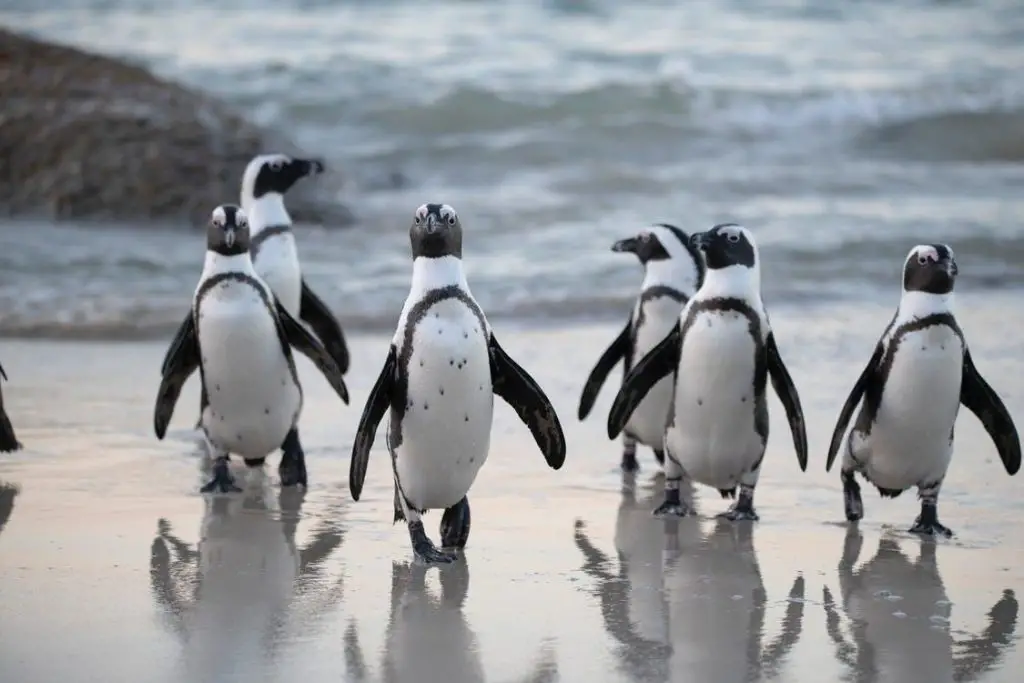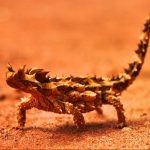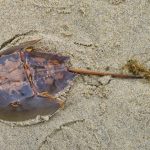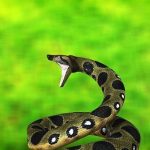Animals that live on the beach have to be able to withstand the harsh environment. They must be able to find food and shelter while avoiding predators. The beach is a unique ecosystem with many different animals that have adapted to life in this environment. Some of the animals that live on the beach include fish, crabs, lobsters, and oysters. each of these animals has a different way of finding food and shelter.
For example, crabs and lobsters use their claws to catch food. Oysters filter food from the water. Fish use their fins to swim and their gills to breathe. Each of these animals has a different way of surviving in the beach ecosystem.
1. Seals
- Scientific name: Arctocephalus forsteri
- Types of animals: Mammals
- Diet: shrimps, octopus, and fish
Most of their lives are spent in the water. So is that of the Phocis family of marine mammals, which includes dolphins and whales. They will, however, take refuge among the rocks or in the sand along the beaches.

Among their most distinguishing qualities are the fact that they lack an auditory canal, that their legs are oriented backward (which explains why they travel with their stomach on land), and that their fur is short. They are even more resistant to heat because they have a thick layer of subcutaneous fat under their skin.
2. Iguanas
- Scientific name: Amblyrhynchus cristatus
- Type of animal: Reptile
- Diet: Red and Green algae

The marine iguana is a species that is unique to the Galapagos Islands, and it is an excellent example of an animal that like to dwell on the beach. Because they are cold-blooded, they like to reside among the rocks, where they can bask in the sun. They will occasionally wander away from the water a bit, towards the mangroves, although this is rare.
3. Chitons
- Scientific name: Polyplacophora
- Type of animal: Algae
- Diet: Algae, Diatoms, Bryozoans

These types of mollusks, which are classified into around 600 species, are commonly referred to as’ sea mealybugs, ‘and they may be found near the shoreline, amid rocky substrates. In addition, they can be found at deep depths in frigid latitudes. Their capacity to ‘roll up’ into a ball when threatened is demonstrated by their ability to remain immobile for an extended period of time, to be nocturnal, and to be nocturnal.
However, this mollusk does not have eyes or tentacles, but it does have a mouth that is coated with teeth, which it uses to feed on algae. The male and female must come together in order to procreate, and the female is responsible for discharging her eggs into the water. The eggs are then fertilized by the male. Internal fertilization, on the other hand, may take place in some instances.
4. Gulls
- Scientific name: Larus delawarensis
- Type of animal: Bird
- Diet: fish, rodents, and mollusks

Although its official name is gull, most people refer to it as a seagull. This bird is yet another of the most emblematic beach-dwelling creatures, having already been mentioned. A huge bird, with gray, black, and white plumage and a powerful orange beak, is truly what it appears to be (as well as orange legs and eyes).
It subsists on everything it can find along the shore, including eggs, rats, veggies, insects, and carrion, among other things. They are hunting for some of their prey in the air. It is extremely clever and possesses a highly developed communication style as well as a highly evolved social system. Furthermore, seagulls breed in large groups, and each clutch of speckled eggs can have up to three speckled eggs.
5. Sea turtle
- Scientific name: Chelonia mydas
- Type of animal: Reptile
- Diet: algae, sea-grasses, and seaweed

Sea turtles can be found in all seas, excluding the polar areas. They are most common in tropical and subtropical waters. The hippo is also well-known for its extensive travels. In their lifespan, hawksbill, green (loggerhead), and leatherback turtles are among those that travel the most distances between locations. Females travel to beaches to spawn despite the fact that they spend most of their time in the sea (males never go ashore).
Following their successful reproduction in the water, the eggs hatch and develop within the female’s body over a period of three weeks. Following that, the mother travels to the beach in search of a suitable location to lay them down to rest. Her first act upon arriving is to dig a big hole in which she will lay as many as 100 eggs. When she returns to the water, she’ll bury them with sand.
6. Sand dollars
- Scientific name: Clypeaster reticulatus
- Type of animal: Echinoderm
- Diet: Crustacean larva, tiny copepods
The time it takes for a sand dollar to wash up on a beach is measured in minutes if the creature does not return to the ocean. Sand dollars that have died are generally white because they have been bleached by the sun. When they are living in their natural environment, they appear substantially different. Sand dollars are often purple and shaggy in appearance. They can chew their food for up to a quarter of an hour before swallowing it, and it can take up to two days for them to digest their meals completely. Even though they’re small, they get a lot of attention from predators because they’re so strong.
7. African penguins
- Scientific name: Spheniscus demersus
- Type of animal: Bird
- Diet: fishes

These penguins are currently on the endangered species list, which doesn’t make them particularly exceptional, but it does indicate that they are becoming increasingly scarce. Despite the fact that African penguins can be found in a number of different countries, there is really only one place where they can be seen up close. Boulders Beach in Simon’s Town, South Africa, has been consistently ranked as one of the world’s finest beach destinations for many years, mostly due to the presence of these magnificent seabirds.
They spend most of their time on Boulders Beach’s rocks and sand before venturing into the sea to swim and hunt. The fact that penguins do not swim with their feet, unlike many other web-footed birds, is something that makes them unique. They navigate by using their wings to swim and their feet to steer. They are also monogamous, with one partner for life or at least for a long period of time.
8. The Roly-Poly
- Scientific name: Armadillidium vulgare
- Type of animal: Crustacean
- Diet: fungi, animals as well as fecal matter
Many individuals aren’t aware that various sorts of creatures may be lurking in the sand when they’re relaxing on the beach and spending time in the sand while relaxing on the beach. Roly-poly’s are a sort of nocturnal crustacean that may be seen in large numbers in the sand at the beach. Roly-Poly are isopods that have been observed moving about on the beach in response to the present water level. They have been observed burrowing out from the high tide line and hiding among dry wrack piles that have accumulated on the coast
9. Blood Worms
- Scientific name: Chironomus plumosus
- Type of animal: Insect
- Diet: fly larvae
If you look for blood worms, look for them in the sand that is somewhat moist and close to the water, since this helps them dig much more easily than they can in coarse sand that is dry. They are distinguished by their bright red hue, which is how they got their name. When you’re digging in the sand, they’re easy to spot because of their vivid color. This species of worm feeds on the sand as they dig through it, and they behave in a similar manner as earthworms. When they ingest organic stuff, they suck the meal up like a vacuum. These worms are also very good at biting, which could cause a very bad allergic reaction.
10. Clams
- Scientific name: Spisula solidissima
- Type of animal: Mollusca
- Diet: algae, zooplankton, and organic matter
Many different types of clams may be found on the sand near the intertidal zone, closer to the waves on the beach. Razor clams and Pismo clams are both highly frequent in the ocean. They are frequently collected for human use as food or for recreational purposes.
11. Sea Otters
- Scientific name: Enhydra lutris
- Type of animal: Mammals
- Diet: sea urchin, snails, mussels, crabs

There are few sights more endearing than a sea otter’s hairy face poking its head out of the water. Possibly, you’ll even witness it float onto its back and split open a clam on its belly with a rock while swimming. California sea otters were nearly exterminated by coastal development, pollution, and oil spills, but conservation efforts have helped the population off the state’s coast rebound to around 3,000 individuals, which is still a significant reduction from their historic numbers but an encouraging improvement nonetheless. Sea otter populations are very sensitive to oil contamination.
12. Monk seals
- Scientific name: Monachus monachus
- Type of animals: Mammal
- Diet: squids, octopuses, eels

With fewer than 1,000 individuals left, Hawaiian monk seals are among the world’s most endangered marine animals, and they are on the verge of extinction in their native waters. They are endemic to all of the Hawaiian Islands, but they have suffered as a result of predation, a shortage of food, and the destruction of their natural environment. Even more, it’s important to act quickly to keep the monk seal population stable now, rather than later. Climate change and rising sea levels are two threats that could happen soon.
Do any animals from the beach also live at the North Pole?
Many people may be surprised to learn that there are no animals living at the north pole. Although the Arctic region houses an array of unique and fascinating wildlife, such as polar bears and Arctic foxes, the actual geographic North Pole itself is a desolate, icy expanse devoid of any permanent inhabitants.
13. Snowy plovers
- Scientific name: Charadrius nivosus
- Type of animals: Bird
- Diet: Invertebrates, insects, beetles, snails

It is likely that you will see shorebirds skittering in and out with the tide as you walk along the shoreline, snatching crustaceans, insects, and worms as they go about their business. The snowy plovers, which have a white breast and face with a brown and grey cloak of feathers, are among the tiniest and prettiest of the bird world’s inhabitants. As a result, they are disappearing from beaches on the West Coast and in the Caribbean. People and their dogs are stepping on their delicate eggs.









